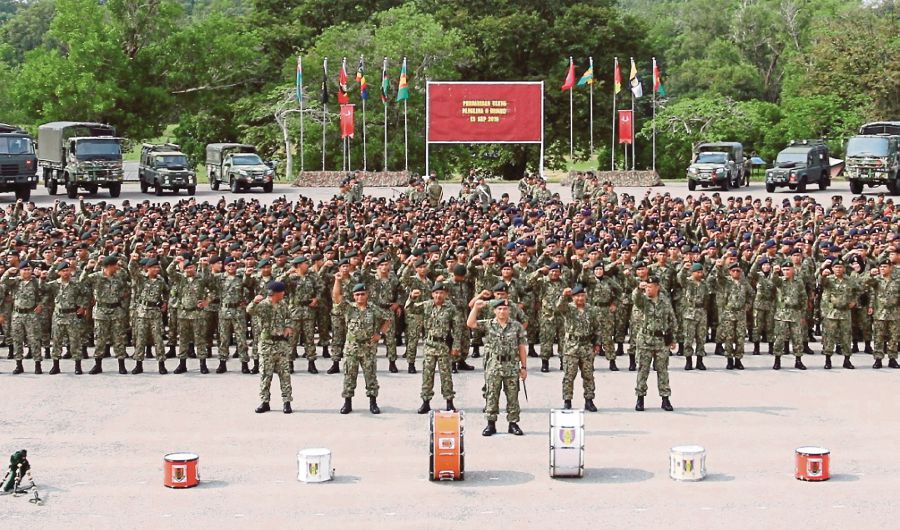THE last few months have been interesting for both professional and casual observers of Malaysia’s defence sector, mainly because of the upcoming Defence White Paper.
Scheduled to be presented to Parliament by October, there have been quite a few articles and discussions on the various ideas of what Malaysia’s defence priorities and postures are, and what needs to be done to ensure their feasibility.
Amid these discussions, it is important to remember that most of Malaysia’s national security threats in the immediate and foreseeable future are from the maritime and air domain. Thus policies, planning and spending need to reflect these challenges and appropriate countermeasures.
Among these security concerns is the South China Sea dispute, which is increasingly growing from a multilateral territorial dispute into an avenue of United States-China competition, and ongoing insecurity in the Sulu Seas and its impact on eastern Sabah. Additionally, Malaysia still grapples with illegal fishing, piracy and maritime disputes with some of its neighbours.
The increasingly competitive, if not adversarial US-China relationship means that we also have to keep an eye on the Straits of Malacca, to avoid any trigger of greater major power involvement. This necessitates greater strategic planning and spending focused on the maritime and aerial domain. We need to carefully and rationally consider the acquisition of assets and capabilities that we can afford to operate, in effective numbers, if ever deployed. Investing in a limited number of flashy assets that look good on paper and in parades, or to ostensibly improve bilateral relations, is a practice that we simply cannot afford any longer. The men and women serving in the armed forces and ministry know what is needed — whether political decision-makers start listening to them, is another matter.
There is also a critical need for greater maritime and airspace domain awareness. The importance of access to reliable information in understanding the nature and extent of a potential threat in planning a response cannot be overstated. In an age of networked systems, should we ever get into a kinetic conflict, it is not about who has the biggest gun but who has a better idea of what and where their target is, that has the advantage. Better domain awareness will also help defence planners deploy limited assets.
The multiple stakeholders engaged in these domains — the navy, coastguard, marine police, fisheries and marine authorities and multiple actors from the private sector — ought to find greater avenues of cooperation. For example, with basic training and a relatively affordable investment in networked communication and GPS systems, fishermen can be co-opted to amplify the eyes and ears of authorities. Neighbouring countries are increasingly utilising this strategy. Petronas, which has a significant presence in the South China Sea and owns some of the best communication and detection systems that money can buy, is another prime candidate for such cooperation.
However, some hard and politically sensitive decisions are needed to enable such changes. One hot potato would be an honest assessment of the size and role of the army, which because of legacy issues, is bigger than that of the navy, coastguard and air force put together. Such a large force requires significant operational and development funding which impacts the funds available to other services.
There is a need to balance the core capacities, immediate and future requirements of our armed forces against the politics of job creation.
It is also high time for a serious discussion on whether the defence budget should be tied to a percentage of the gross domestic product. This would give defence planners the much needed predictability in terms of balancing requirements and the budget they can expect from the government. The practice of drastically cutting down on defence spending every time there is a budget crunch, and giving small increments via supplemental budgets, sometimes at random, throws defence planning into limbo — including critical development and operational funds.
Another hot potato would entail an honest reassessment of our domestic defence industry. Third party vendors, masquerading as “industry” that do not contribute any expertise or value-add to the overall defence sector, should be eliminated. Defence spending is expensive enough as it is without these well-connected interests further skimming government funds in the name of “self-reliance”. It is possible to have a more transparent defence spending regime, especially in terms of contracts and suppliers. Many countries do it without compromising security concerns.
While diplomacy has always been our first, and an effective, line of defence and offence, Malaysia is sitting in the middle of a region that is undergoing tremendous flux. The threats have always been present and in some cases, are increasingly grave. A credible deterrence is an essential, albeit silent, component of good diplomacy. The non-traditional challenges from non-state actors that we face also require a mix of responses, sometimes kinetic in nature.
We have been fortunate to avoid major conflict thus far, but we must not take the peace dividend for granted. Troops are often told to innovate in the face of adversity, but the reality is that there is only so much innovation one can do without sufficient resources. We have dedicated men and women working in tough conditions to maintain that peace — the least we can do is to provide them with the proper tools to do the job.
This article first appeared in The New Straits Times on 22 April 2019





